Parties are an essential aspect of human culture, serving as joyful celebrations of various occasions, milestones, and traditions. While most parties tend to be relatively conventional, there are some gatherings around the world that venture into the realms of the extraordinary and bizarre. From quirky rituals to outlandish customs, these ten bizarre parties showcase the diversity and uniqueness of global festivities. Let’s embark on a journey to explore some of the most eccentric celebrations that exist around the world.
1. La Tomatina – Buñol, Spain
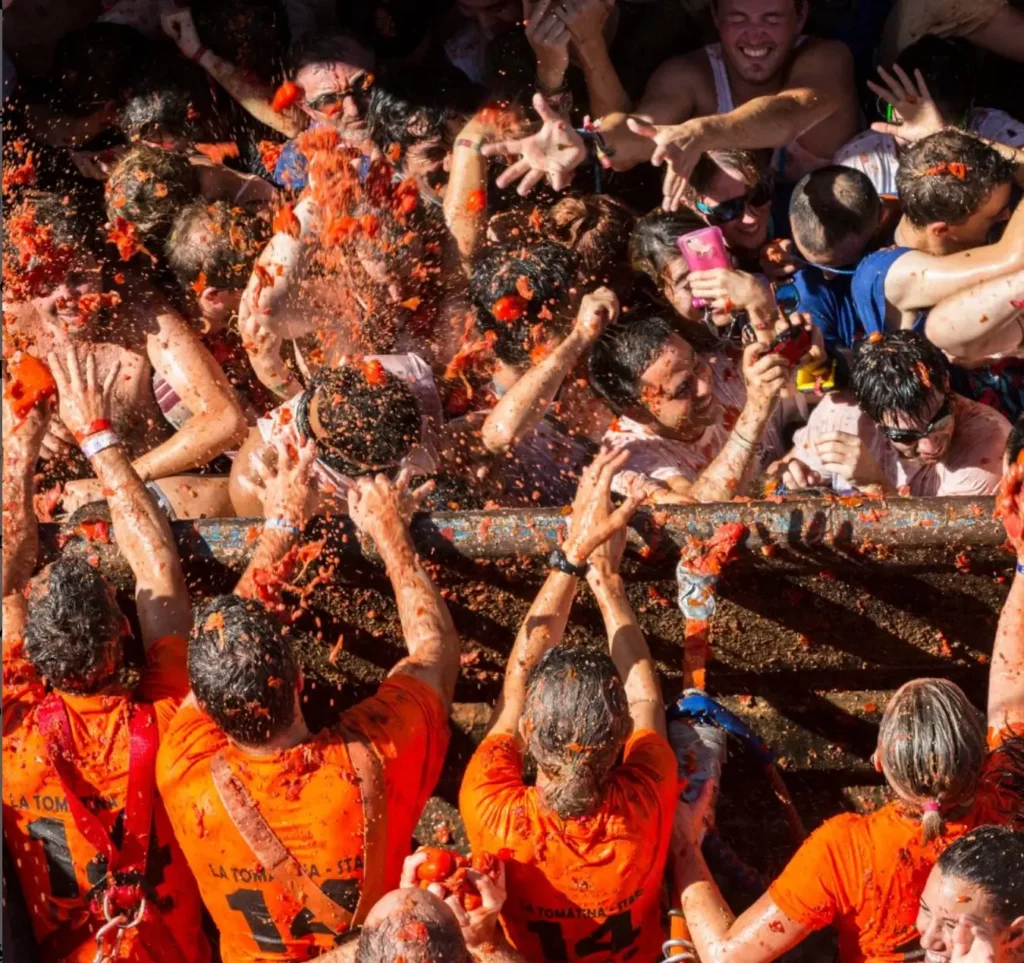
Source: @latomatinaoficial
La Tomatina is the world’s largest food fight, held in the small town of Buñol, Spain. The event started spontaneously in 1945 when a group of young people engaged in a tomato-throwing battle during a parade. It was so well-received that it became an annual tradition. On the last Wednesday of August, trucks loaded with tomatoes roll into the town’s streets, and participants hurl tomatoes at each other, creating a chaotic and exhilarating scene. The tomato pulp eventually covers the streets and participants, resulting in a memorable and surreal experience.
2. Up Helly Aa – Shetland, Scotland
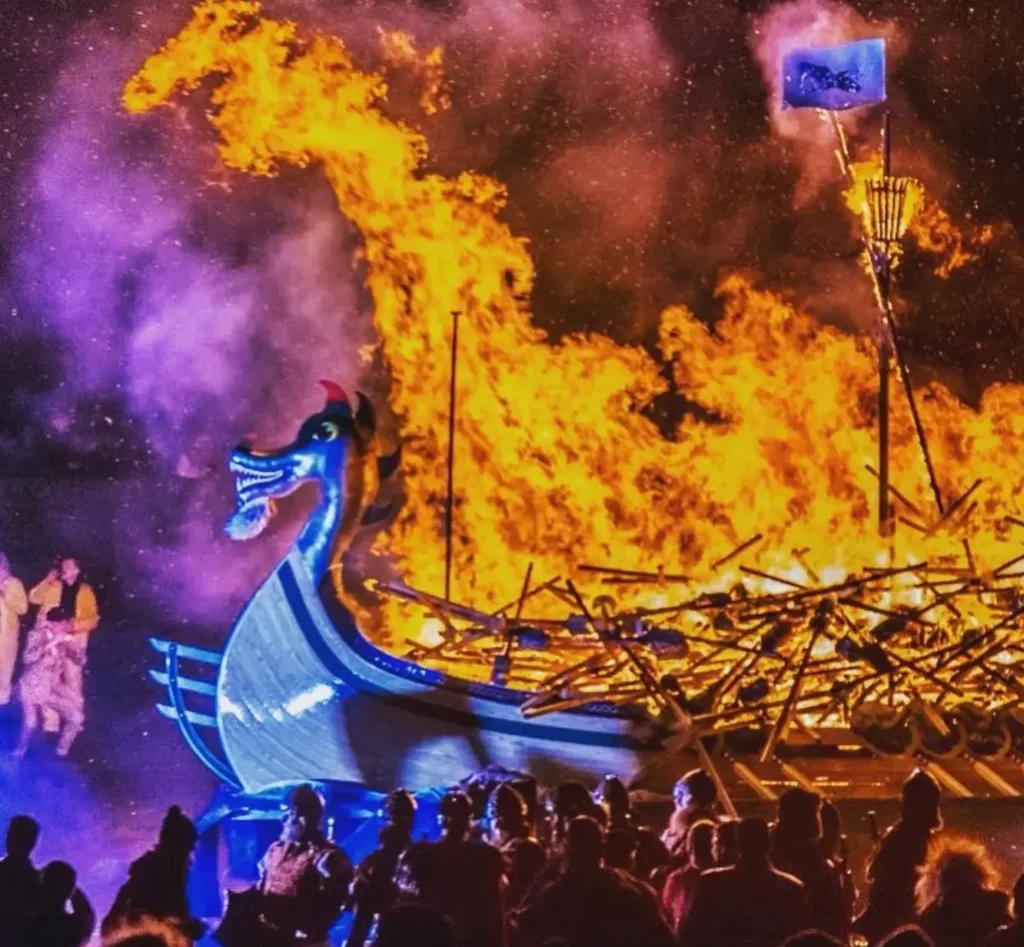
Source: @uphellyaa
Up Helly Aa is a unique fire festival celebrated in Lerwick, Shetland Islands, Scotland. It originated in the 19th century and is held on the last Tuesday of January. The festival involves a procession of torch-carrying locals dressed as Vikings, who march through the town, eventually arriving at a designated location where a grand Viking longship awaits. The culmination of the event sees the ship set ablaze, illuminating the night sky with a spectacular fire display. This tradition pays homage to the region’s Viking heritage and showcases the strong community spirit of the Shetland people.
3. Day of the Dead (Día de los Muertos) – Mexico
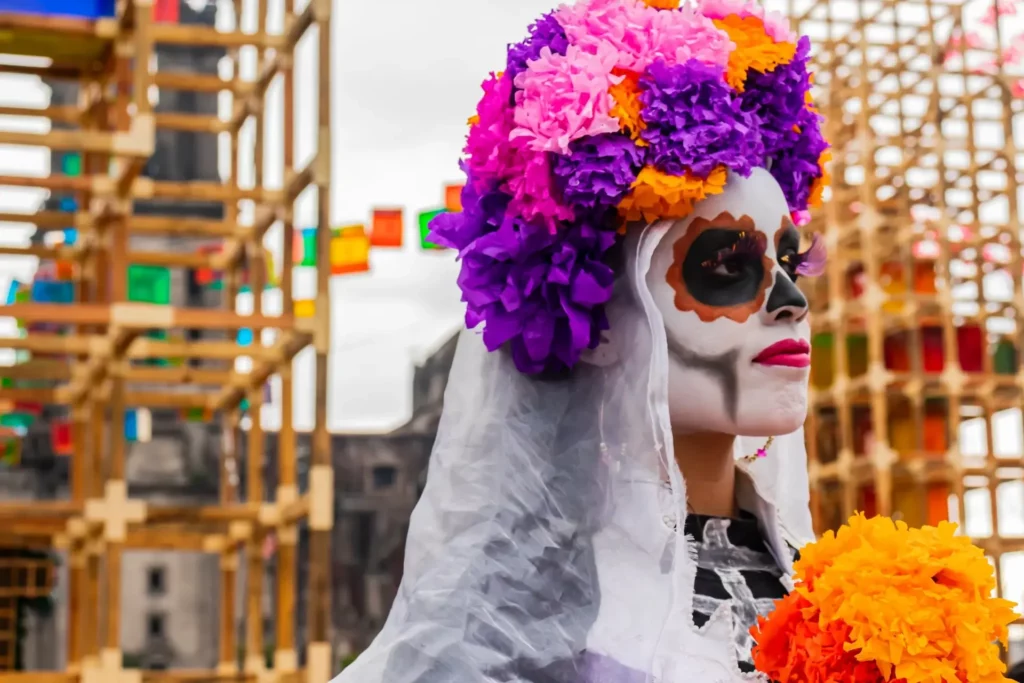
Day of the Dead is an ancient Mexican tradition with indigenous roots, which has evolved to become a fusion of indigenous and Catholic beliefs. The celebration occurs on November 1st and 2nd, coinciding with All Saints’ Day and All Souls’ Day. Families create altars adorned with marigold flowers, candles, photos, and the favourite foods and beverages of their departed loved ones. They believe that the souls of the deceased return to Earth to visit their families during this time. The atmosphere is one of joyous remembrance, with people visiting cemeteries to clean and decorate graves, play music, and hold lively processions.
4. Songkran – Thailand
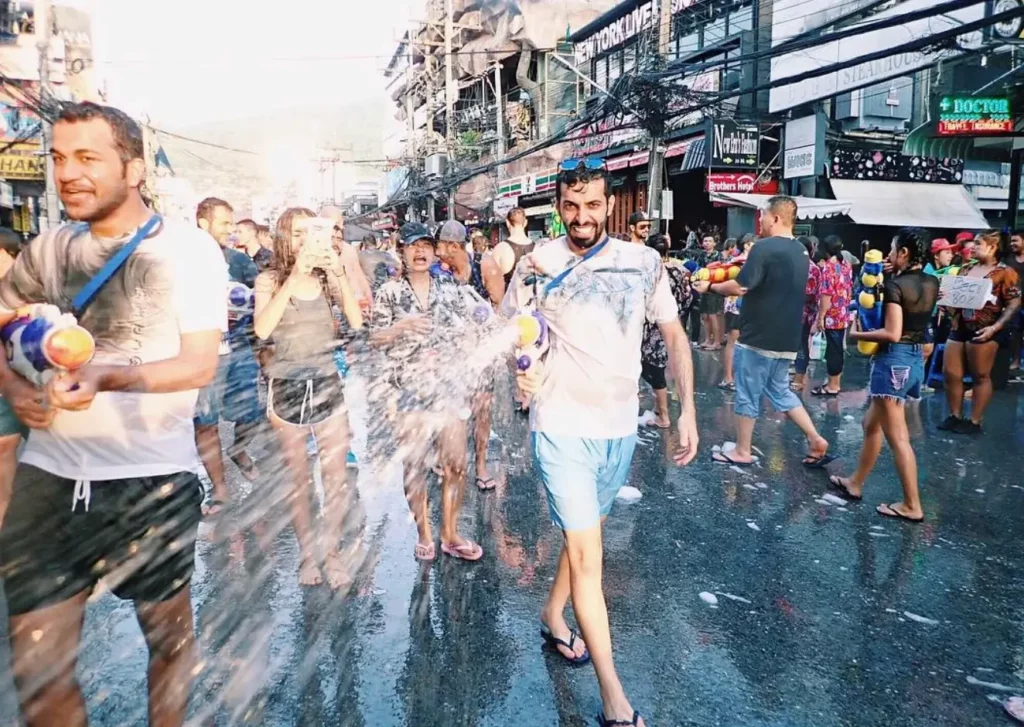
Source: @songkrangram
Songkran marks the Thai New Year and is celebrated from April 13th to 15th. Traditionally, people gently poured water over the hands of elders as a sign of respect and cleansing. However, over the years, the festival has evolved into a nation-wide water fight, where water guns, hoses, and buckets are used to splash water on friends, family, and strangers alike. The playful water fights are a way to cool off during Thailand’s scorching hot season and symbolise the washing away of bad luck and misfortune, welcoming the new year with fresh beginnings.
5. Koningsdag (King’s Day) – Netherlands
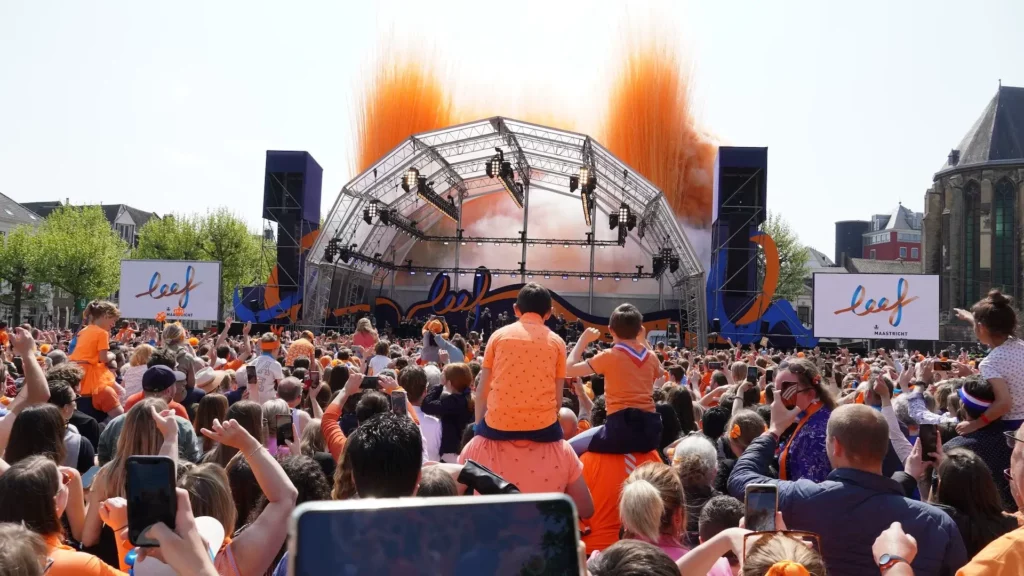
Koningsdag, also known as King’s Day, is a nationwide celebration in the Netherlands that honours the Dutch monarchy. The festivities are held on April 27th, the birthday of King Willem-Alexander, the reigning monarch.
The streets of Dutch cities and towns are adorned with orange decorations and filled with a sea of orange-clad revellers, as orange is the colour of the Dutch royal family, the House of Orange-Nassau. The day is marked by a massive flea market, where people of all ages sell second-hand goods, adding to the festive atmosphere. Parades, concerts, street parties, and traditional games and sports are also held throughout the country. Koningsdag is a time when the Dutch people come together to celebrate their culture, history, and shared identity as a nation.
6. Boryeong Mud Festival – South Korea
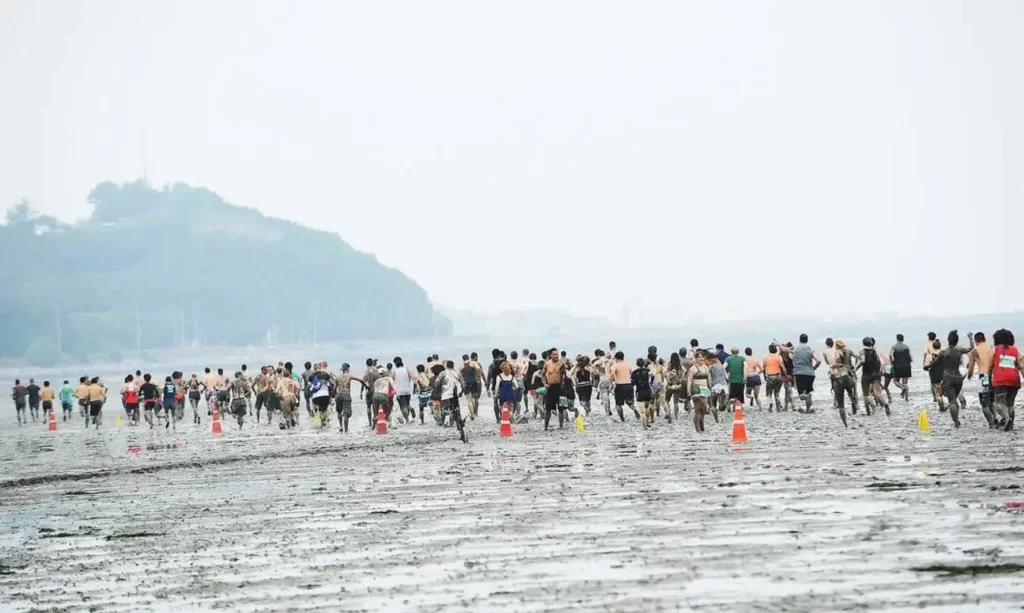
Source: @boryeongmudfestival
The Boryeong Mud Festival takes place every July in Boryeong, South Korea. The festival was initially organised to promote the region’s local mud, which is rich in minerals and beneficial for the skin. Since its inception, it has grown into an international attraction, drawing visitors from all over the world. The festival features mud-related activities, such as mud wrestling, mudslides, and mud baths, where participants can immerse themselves in the therapeutic properties of the mineral-rich mud.
7. Kanamara Matsuri (Festival of the Steel Phallus) – Japan

Kanamara Matsuri, held annually in Kawasaki, Japan, is a lively celebration that revolves around fertility and sexuality. The festival has its roots in the Edo period, where sex workers and metalworkers would pray for protection against sexually transmitted infections and for prosperity in their businesses. Today, the event has evolved into a vibrant and open-minded festival that welcomes locals and curious tourists alike.
During Kanamara Matsuri, participants carry large phallus-shaped mikoshi (portable shrines) through the streets, often donning costumes and masks. Visitors can sample various phallic-themed foods, from sweets to vegetables, and purchase souvenirs such as keychains and toys in the shape of male genitalia. The festivities promote sexual health awareness and support HIV research, emphasising a light-hearted and accepting approach to discussing an often-taboo subject.
8. Holi Festival – India
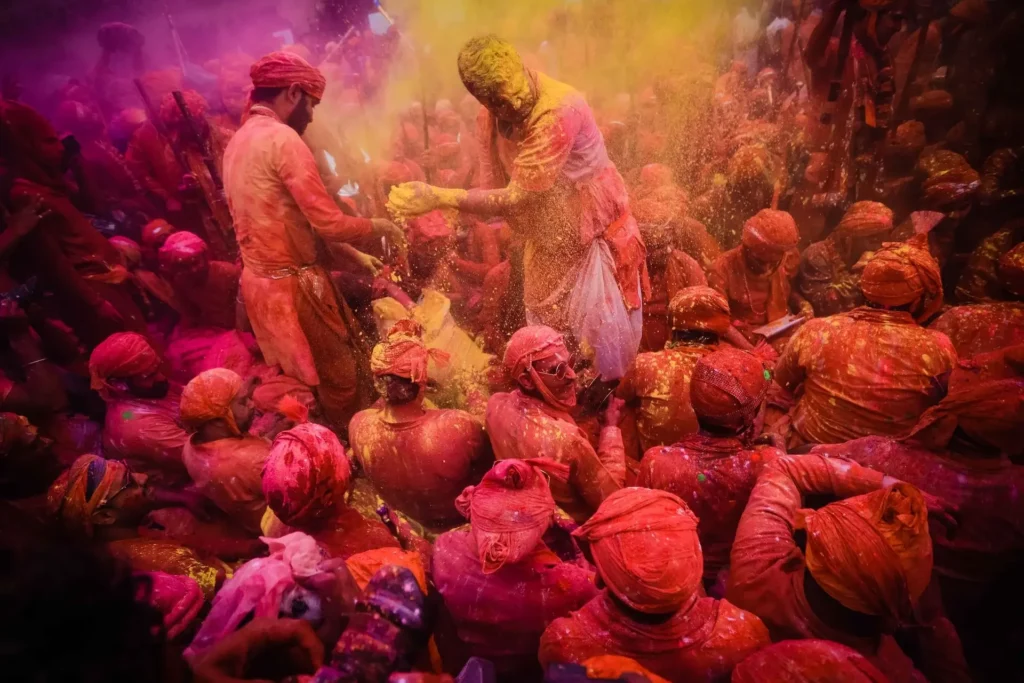
Holi, known as the Festival of Colours, is one of India’s most famous and exuberant festivals. Celebrated with tremendous enthusiasm, the festival marks the triumph of good over evil and the arrival of spring. Holi festivities usually last for two days, starting on the full moon day in March.
The most iconic aspect of Holi is the colourful powder (gulal) and water that participants playfully throw at each other. This joyful exchange of colours represents unity and the breaking down of social barriers, as people from all walks of life come together to celebrate. The vibrant atmosphere is accompanied by music, dance, and traditional sweets and savouries. Holi is a celebration of life, love, and the renewal of relationships.
9. Burning Man – Nevada, USA
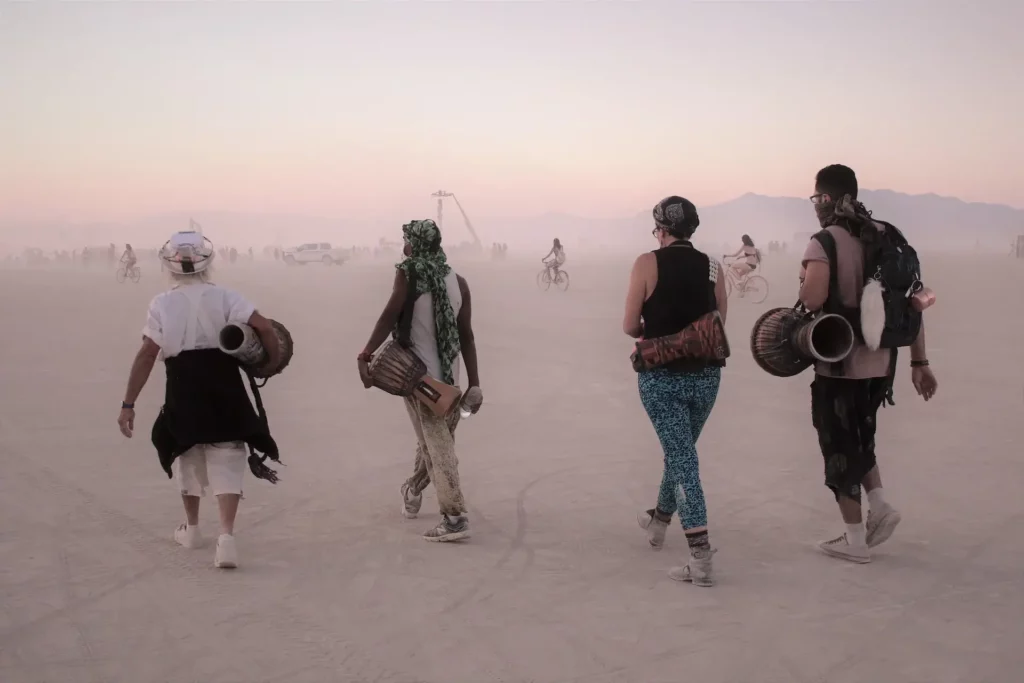
Burning Man is an annual arts and music festival that takes place in the Black Rock Desert of Nevada, USA. The event is a temporary community where participants, known as “Burners”, come together to create a unique social experiment based on principles such as radical inclusion, self-reliance, and communal cooperation. The festival’s ethos encourages artistic expression, self-reliance, and an ethos of gifting, where participants share their talents and resources freely. The highlight of Burning Man is the burning of a massive wooden effigy (“the Man”) on the penultimate night, followed by the burning of a temple structure the next night. These burnings symbolise the release of participants’ creativity, personal growth, and attachment to material things.
10. Cheung Chau Bun Festival – Hong Kong
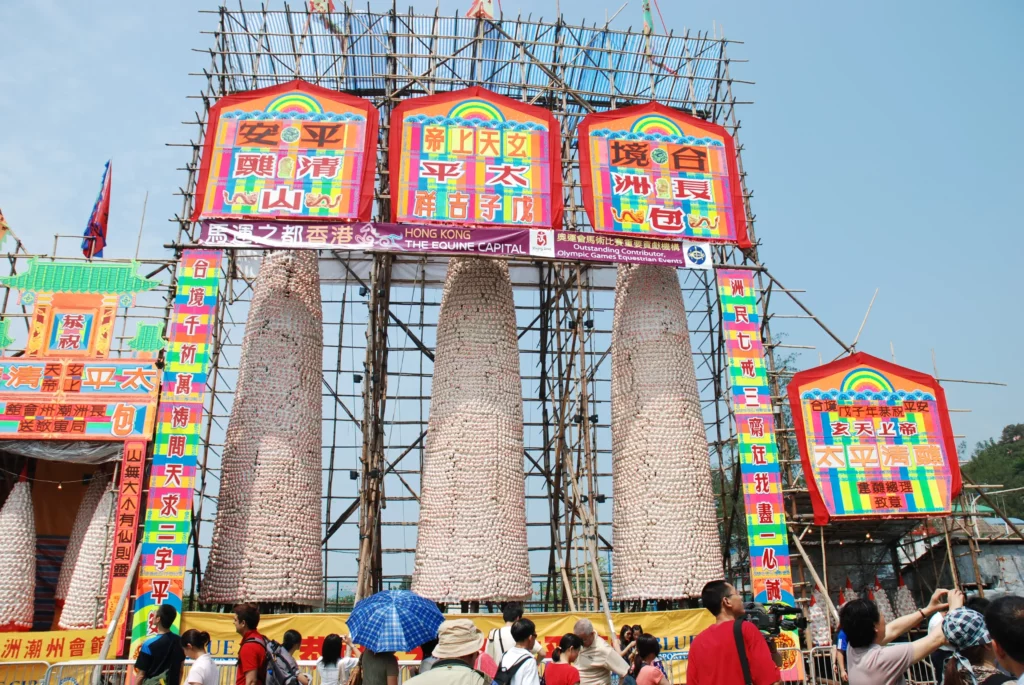
The Cheung Chau Bun Festival is an intriguing Taoist event held on the island of Cheung Chau in Hong Kong. The festival dates back to the 18th century and is rooted in local folklore.
The highlight of the festival is the “Bun Scrambling Competition”, where participants compete to climb a 60-foot bamboo tower covered with imitation buns. The objective is to collect as many buns as possible. The event is said to bring good luck to those who participate and is considered a test of bravery and agility. Apart from the bun scrambling, the festival also includes colourful processions, traditional lion dances, and other religious ceremonies, making it a fascinating blend of cultural, spiritual, and competitive elements.
Conclusion
These 10 bizarre parties from around the world showcase the rich tapestry of human culture, from the playful and fun to the deeply spiritual and symbolic. Each event offers a glimpse into the diverse traditions, customs, and values of different cultures. Whether it’s revelling in the chaos of tomato fights, paying homage to ancestors in colourful processions, or finding artistic expression in elaborate carvings, these unique celebrations remind us of the universal need for joy, connection, and celebration of life.
